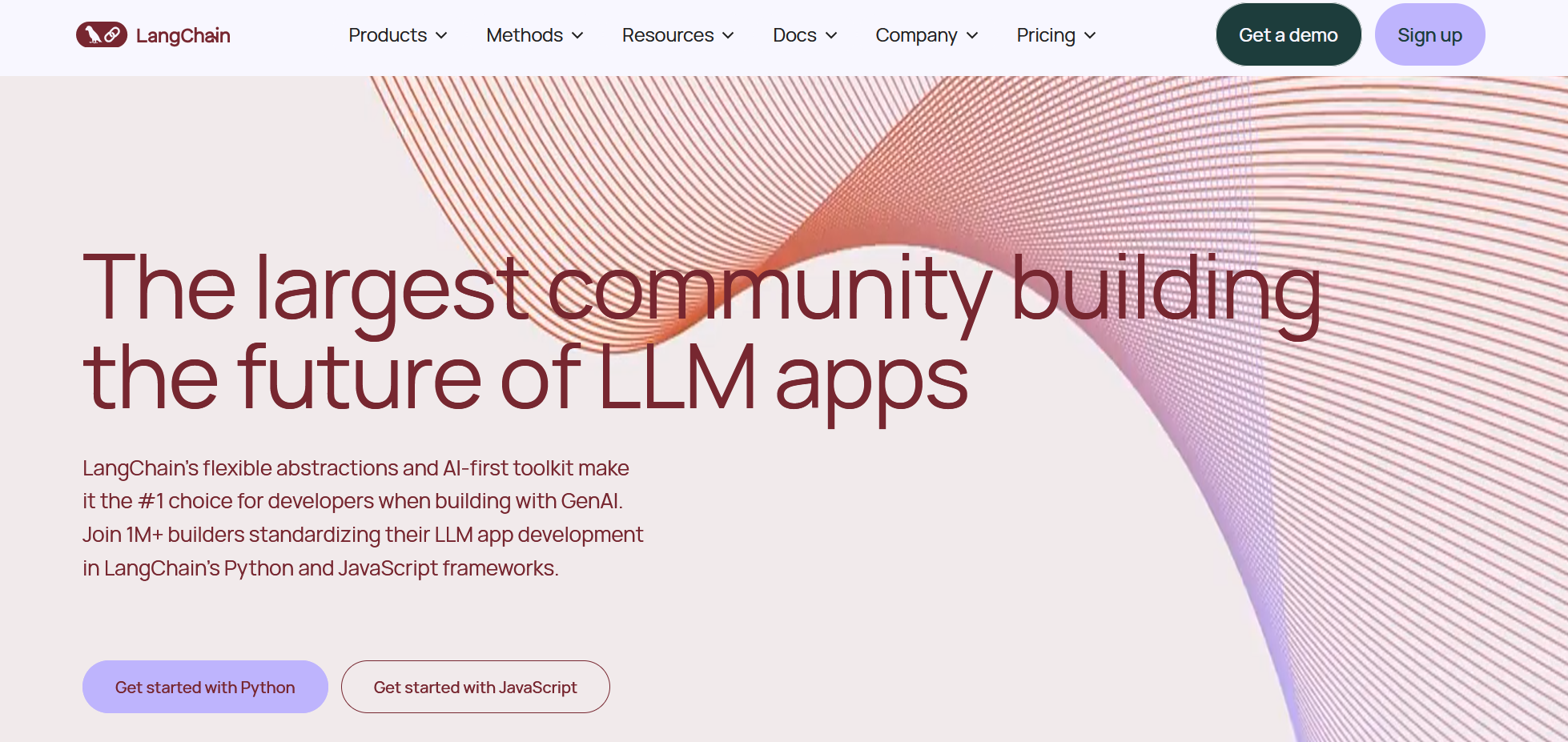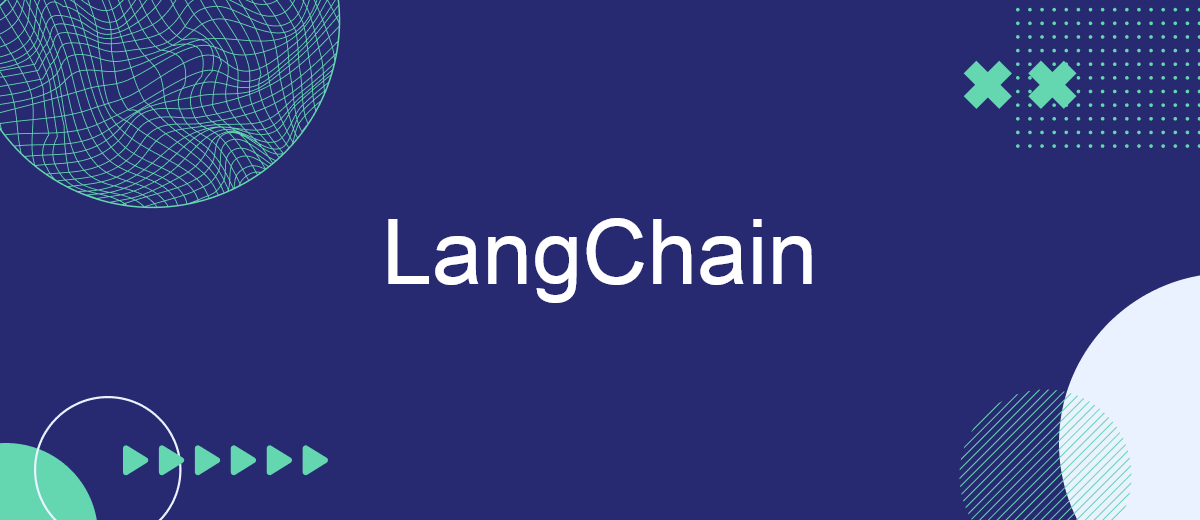The spread of artificial intelligence (AI) and machine learning (ML) has led to the emergence of a number of powerful platforms that make these technologies available to a wide range of developers. One of these solutions is LangChain. This is what we will talk about in our article. You will learn what this system is, what functions it has, how it works, and where it is used.
What is LangChain
LangChain is an open-source framework that provides access to large language models (LLM) for software development. The toolkit and API are available through JavaScript and Python libraries. It enables developers to speed up and simplify the process of creating AI/ML services and applications (virtual agents, chatbots, intelligent search systems, etc.).
The modular structure of the framework allows dynamic handling of different queries and base models with a minimum of handwritten code, as well as the use of multiple LLMs. The main goal of LangChain is to establish a centralized environment for developers, enabling them to efficiently build LLM-enabled software and integrate it with external workflows and data sources.
Launched in the fall of 2022 by Python developer Harrison Chase, the LangChain project quickly gained popularity. It soon became one of the fastest-growing open-source projects on GitHub. The framework's success coincided with the release of the ChatGPT chatbot, which sparked a surge of interest in the topic of generative AI.

At the time of writing, a small team of specialists in San Francisco is working on LangChain. In addition to it, they have already released a number of other products to support LLM development (for example, LangGraph, LangSmith). The LangChain community today unites more than 1 million AI/ML enthusiasts and over 4,000 contributors. The number of applications created with its help has exceeded 100,000. This framework is downloaded more than 15 million times per month.
Key Features and Integrations of LangChain
The framework offers a wide range of tools that simplify interaction with LLMs, automate processes, and increase the efficiency of data processing. Built-in integrations with vector databases and popular cloud services make this platform a universal solution for developing intelligent systems.
Let's look at the main LangChain tools, functions, and capabilities:
- LLM interface. The native API enables developers to integrate their applications with a range of public and proprietary LLMs: GPT, Bard, PaLM, and others. This allows them to send commands and pass data through simple API calls without having to write code by hand.
- Chains. When developing complex AI solutions, interactions between multiple functions, language models, or data sources are often required. One of the main LangChain features is the ability to connect the necessary components into sequential workflows (chains). At each stage, information is processed and passed on. This helps automate complex queries and makes integration with LLMs more flexible and efficient.
- Prompt templates. Ready-made structures simplify and speed up sending requests to AI models. Developers can create custom prompt templates for specific applications and prepare instructions for specific LLMs. Such templates can be reused in other models and applications.
- Agents. This important mechanism of LangChain is a special mechanism that automates the process of selecting the optimal sequence of actions for a model to execute a request. Developers send input information to LLMs, agents analyze it, and choose the best order of steps for a particular application.
- Memory. LangChain has a memory module that allows language models to remember the context of their interactions with users and use this information to refine subsequent queries. The framework supports two types of memory: simple (saves only the latest conversations) and complex (analyzes the entire history of interactions). Both can be used in applications created on its basis.
- Retrieval modules. The platform provides tools for developing RAG systems. They help search, transform, store, and extract information. These modules enable the formation of semantic text representations using word embeddings and save them in vector databases (local and cloud).
LangChain not only offers its own tools but also easily integrates with many different LLMs and third-party systems. This significantly expands its potential for software development. For example, with this framework, developers can easily and quickly connect their chosen LLM (from OpenAI, Hugging Face, etc.) with data stores and sources (Apify Actors, Google Search, Wikipedia, Wolfram Alpha, etc.).
How LangChain Simplifies AI Development
The LangChain AI platform automates LLM-enabled application development using "abstractions." They simplify program code by abstracting complex processes (one or more) in the format of a named component. Each of these components records a certain sequence of actions performed during software development.
Essentially, this framework is an abstraction library for Python and JavaScript that provides tools for working with LLMs. Its modular components serve as building blocks for creating generative AI applications. With LangChain’s tools, developers link these blocks into complex NLP chains, minimizing the amount of handwritten code.
Let's consider how to use LangChain to create AI/ML applications. A typical development workflow with this framework involves the following steps:
- Design. First, developers design the application, defining its purpose and scope. At this stage, the software architecture is also formed, covering its key components, LLMs, and integrations.
- Development. Then specialists proceed to create the main functionality of the program. To achieve this, they use ready-made prompts with introductory information for language models. The framework partially automates the development of software functionality and logic, reducing the need to write a large amount of code manually.
- Customization. At the next stage, developers use LangChain tools to customize the AI/ML applications they create. The framework allows you to adapt workflows and components to specific purposes and software usage scenarios.
- Fine-tuning. Once the customization is complete, the experts select the appropriate LangChain LLM and fine-tune it. Proper execution of this task maximizes its potential for achieving the goals of the application being created.
- Data cleaning and protection. The use of up-to-date data cleaning methods improves the quality and accuracy of data. This has a positive effect on the performance of LLMs. In addition, measures are taken at this stage to protect confidential information.
- Testing. The final part of developing AI/ML applications using the LangChain framework includes comprehensive testing. This allows developers to detect and fix errors in a timely manner, ensuring stable and uninterrupted operation of the software.
Examples and Use Cases for LangChain
Due to its modularity and integration support, the LangChain framework is used in a wide range of areas, from automated customer service to intelligent search and data processing. The variety of its use cases confirms the relevance of the question of what LangChain is used for, since it opens up wide opportunities for working with language models.
Let's consider the most popular LangChain use cases:
- Chatbots. One of the platform’s application options is the development of chatbots for customer support and service. It can be used to create conversational AI systems for processing user requests and transactions, remembering the history of messages and considering the context.
- Virtual agents. The agents within the framework can be used to develop versatile LLM applications, including virtual agents. The latter effectively automate work processes, independently determining the optimal sequence of actions and performing them with the participation of robotic process automation (RPA) technology.
- Search engines. LangChain is used to create AI systems for searching data and documents in specialized databases and storage. Properly configured LLMs can quickly find the information the user is interested in and provide accurate answers to queries.
- Data summarization and augmentation. Models created on the basis of this platform effectively cope with tasks of summarizing different text formats: from email and web content to transcripts and academic articles. They have also proven themselves in augmentation processes – generating synthetic data for machine learning tasks.
LangChain Alternatives
Although LangChain is one of the most popular frameworks for LLM development, specialists use other tools for various tasks no less successfully. The following solutions serve as alternatives:
- Low-code/no-code platforms n8n, Flowise, and Langflow. They allow you to develop AI applications with minimal coding. This makes them convenient for users without deep technical knowledge.
- Frameworks for data integration LlamaIndex, txtai, and Haystack. These platforms help to effectively organize the search and processing of information, in particular semantic search and RAG systems.
- Frameworks for creating AI agents CrewAI, SuperAGI, Autogen, Langdroid, and Rivet. The listed solutions are designed to create autonomous AI agents that are capable of performing complex tasks.
- Specialized LLM tools Semantic Kernel, Transformers Agent, Outlines, and Claude Engineer. They are suitable for narrowly targeted use: setting up prompts, working with embedding models, and managing generative AI.
The choice of an alternative may be influenced by the requirements of a specific project, the desired level of automation, as well as the ease of integration with other services used in the work.
Bottom Line
LangChain is one of the most famous and popular frameworks for developing applications involving LLMs. The platform provides a wide range of tools and functions that help to embed the necessary modules into the software functionality and flexibly customize them. They significantly simplify and accelerate the process of creating AI/ML applications, minimizing the amount of handwritten code due to comprehensive automation.
If you use Facebook Lead Ads, then you should know what it means to regularly download CSV files and transfer data to various support services. How many times a day do you check for new leads in your ad account? How often do you transfer data to a CRM system, task manager, email service or Google Sheets? Try using the SaveMyLeads online connector. This is a no-code tool with which anyone can set up integrations for Facebook. Spend just a few minutes and you will receive real-time notifications in the messenger about new leads. Another 5-10 minutes of work in SML, and the data from the FB advertising account will be automatically transferred to the CRM system or Email service. The SaveMyLeads system will do the routine work for you, and you will surely like it.
